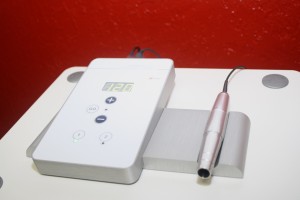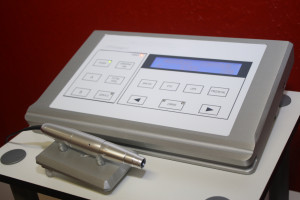General Information about Permanent Makeup, its benefits and its history.
- naturally, lashes are too fair / faint in color
- correction of sparse or missing lashes
- reduction or elimination of daily “prep”-time, adding valuable time otherwise lost to applying, correcting, removing, etc. make-up.
- eye conditions which may prevent or inhibit effective use of traditional make-up
- active lifestyle, and activities like swimming / water-sports without the need to worry about effects on make-up
- unsteady, shaky hands could prevent application of make-up on a daily basis
- eliminating of smudging, smearing, running make-up products, so-called “racoon”-eyes, etc.
- elimination of adverse allergic reactions to certain cosmetic products and/or ingredients
- correct or improve certain skin conditions, abnormalities or imperfections (genetic, or medical)
 BENEFITS OF SKIN NEEDLING
BENEFITS OF SKIN NEEDLING
(procedure to increase collagen production in the skin, improving tone and elasticity)
- diminish or reduce the appearance of lines and / or wrinkles (“anti-aging”)
- non-surgical skin-tightening
- treat scars (e.g. caused by acne, surgery, burns, mole removals, etc.)
- improve the appearance of stretch-marks
- tattoo-removal
Micro-needling works by treating not only superficial layers, but also deeper layers of the skin without damaging or removing any upper layers. The body responds to this treatment by the production of elastin and collagen fibers, as well as new capillaries (blood vessels) to improve blood circulation, which leads to a healthier plumping of the skin, and better overall appearance. Any part of the body covered by skin can be treated, not just the face and neck. Treatments should be no less than 4 weeks apart. (sometimes, I may recommend 6-8 weeks, depending on the case).
[ beauty marks / freckles ] [ eyebrows ] [ eyeliner ] [ lips ] [ pubic hair ] [ skin needling ]
PLEASE NOTE:
Persons with: open wounds, cuts, abrasions, sores, infectious skin conditions, history of keloid, or hypertrophic scars, hemophilia, etc. ARE NOT SUITABLE CANDIDATES for ANY procedures I perform. I reserve the right to refuse to perform any procedure for safety or medical reasons. If in doubt, please consult with me and your physician, before considering any procedure. (medical documentation may be necessary)
I also work specifically with: Dermatologists, Oncologists, Beauticians, Cosmetic/Plastic Surgeons, Salons / Spas, and other professionals.
HISTORY
Tattooing has been around for as long as humans have been walking this Earth. Ancient Egypt has generally been receiving the credit for having “invented” the art of tattooing and the prolific use of makeup (“kohl”). However, several discoveries of cave-dwelling, pre-historic humanoids have offered proof of body-art predating ancient Egypt by many millennia.
Virtually all human civilizations and cultures throughout history, spreading across the globe, have engaged in some local forms of body-art, including tattooing, marking, branding or coloring.
The world’s first (officially) tattoo-parlor was opened in 1846, in New York city, by a German immigrant Martin Hildebrandt. Over the next half a century, tattooing became an ever-increasingly accepted form of body art, initially popular among soldiers and sailors, initially.
When you cross tattooing and make-up, you end up with so-called “permanent” makeup, with pigments being applied into the skin of the recipient, usually to areas of the face, predominantly around the eyes and the mouth. Today, permanent makeup is regarded both as a science and as an art. Many of its applications and uses go beyond the mere “cosmetic” and cross into semi-medical areas, treating or improving certain skin conditions or defects.

